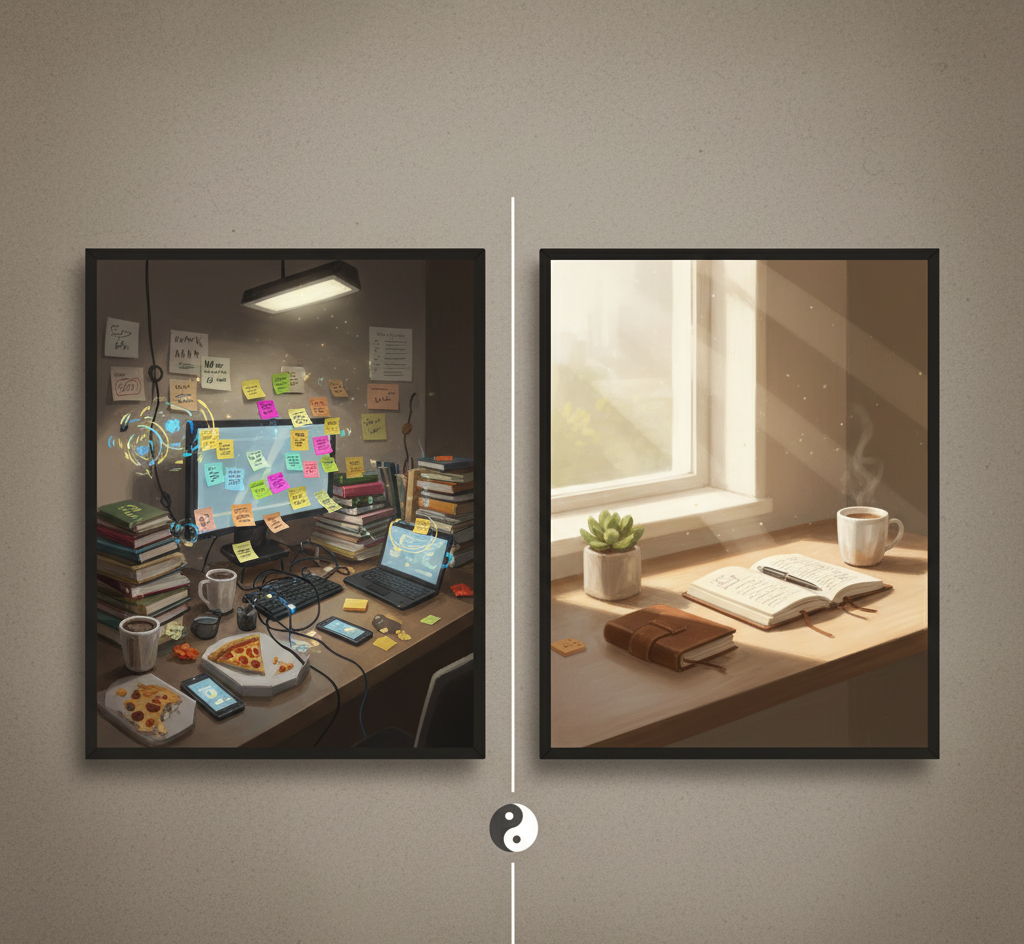Have you ever revisited a book only to realize it was quietly holding lessons you completely overlooked the first time? That was me with Atomic Habits by James Clear. I first read it years ago, highlighted half the book, and told myself I had it “figured out.” But when I picked it up again recently, I noticed something surprising: the ideas hit differently.
The second reading revealed subtler insights I wasn’t ready for the first time. Maybe you’ve had that experience too — where timing makes all the difference. This post builds on my earlier reflection in Books That Changed How I Work, but zooms in on one book that deserves a closer look.
Here’s what I missed the first time around, and why these overlooked lessons might be exactly what you need now.
Habits Are Less About Goals, More About Identity
The first time I read Atomic Habits, I focused on the practical stuff: habit stacking, environment design, the two-minute rule. All useful, yes — but what I glossed over was the deeper idea that habits shape who we are, not just what we do.
Clear writes that every action is a vote for the type of person you want to become. The first time, I underlined it. The second time, I actually paused and asked: What identity am I voting for with my daily actions?
Why This Matters
- Goals fade, but identity lasts.
- It’s easier to stick to habits when they align with who you believe yourself to be.
- The question isn’t “How do I finish this project?” but “Am I the kind of person who finishes projects?”
Takeaway: Your habits don’t just build results — they build you.
Environment Matters More Than Willpower

I used to treat willpower like a muscle I just needed to strengthen. But re-reading reminded me: environment design makes willpower almost irrelevant.
The first time around, I admired this concept but didn’t apply it deeply. The second time, I saw how small tweaks — moving apps off my phone’s home screen, keeping my journal open on my desk, setting coffee next to my laptop before bed — created automatic cues that made habits frictionless.
Practical Adjustments I Made
- Placing noise-canceling headphones on my desk instead of in a drawer.
- Keeping fruit in a visible bowl instead of buried in the fridge.
- Scheduling “do not disturb” hours on my calendar, not just in my head.
Takeaway: Make the right choice the easy choice, and the wrong choice the hard one.
The Importance of Tracking Small Wins
The first read left me energized but also slightly overwhelmed — I wanted to overhaul everything. This time, I noticed how much Clear emphasizes tracking tiny progress.
Instead of chasing big results, he suggests focusing on visible markers: a checked-off habit tracker, a growing streak, a tally on a sticky note. I realized I had skipped this because it felt trivial. But small wins are the proof your brain needs to keep going.
Why Small Wins Stick
- They give you visible evidence of change.
- They create momentum when motivation dips.
- They shift your self-image faster than big goals alone.
Now, I keep a simple weekly tracker in Notion (yes, inspired by my earlier system). It’s not fancy, but it works.
Takeaway: Progress is addictive when you can see it build in real time.
Habits Aren’t Just About Addition, They’re About Subtraction

The first time, I focused on what I wanted to add: more reading, more writing, more focused hours. What I missed was Clear’s emphasis on the power of subtraction.
Sometimes the most impactful habit isn’t starting something new but removing what drains you. For me, that looked like unsubscribing from noisy newsletters and deleting apps that never earned their keep.
Takeaway: Eliminating friction from your life is as powerful as adding structure.
Habits Work Best When They’re Social
This one didn’t land with me the first time — maybe because I was trying to “go it alone.” But re-reading made me see how deeply we mirror the habits of those around us.
Clear points out that belonging often matters more than motivation. If your circle values health, focus, or creativity, you’ll naturally lean in that direction.
- Join a group that practices the habit you want.
- Find a friend who shares the same small goal.
- Surround yourself with people who normalize the behavior you want to adopt.
Takeaway: Habits spread faster when you’re not the only one practicing them.
Conclusion

Re-reading Atomic Habits reminded me that books don’t change — but we do. What we miss the first time often becomes exactly what we need the second.
For me, the overlooked lessons were about identity, subtraction, and the quiet power of small wins. Together, they reshaped how I think about daily choices and reminded me that progress isn’t about heroic effort, but steady, thoughtful design.
If you’ve read Atomic Habits once, I encourage you to revisit it. You might find it speaks differently now — and that’s the gift of a great book.
And if you want to see how this connects to other books that reshaped my workflow, check out Books That Changed How I Work. It’s the natural next step in exploring how ideas on paper can transform how we live and work.





